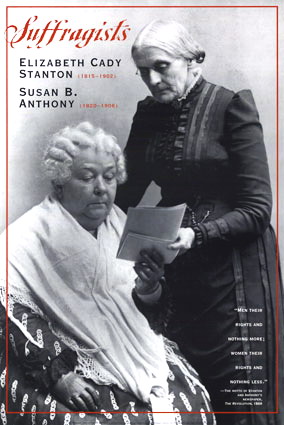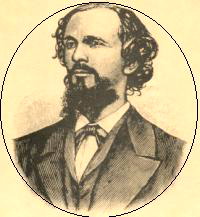赫希菲爾德性學資料庫
Archiv für Sexualwissenschaft
原著:[德]歐文•黑伯樂(Erwin Haeberle);譯者:[中國]彭曉輝;校對者:[美]阮芳賦
Original: Erwin Haeberle [Germany]; Translator: Xiaohui Peng [China]; Reviser: Fang-fu Ruan [USA]
I.先行者(古代-1892)
| 1822年 | 英國人法蘭西斯·普雷斯(Francis Place)及其他有識之士發動了爭取避孕的“新馬爾薩斯”運動。在19世紀期間,這個運動的最主要代表人物是查理斯·布拉德勞(Charles Bradlaugh)、安妮·畢散特(Annie Besant)、查理斯·諾爾屯(Charles Knowlton)、查理斯·蕞斯德爾(Charles Drysdale)和艾麗絲·葦柯瑞·蕞斯德爾(Alice Vickery Drysdale)。通過他們的抗爭,改善了許許多多工作婦女的境遇,因為她們被太多的生育所拖累了。不過,尚未發現有來自馬克思和恩格斯對避孕運動的支持。 | |
| 德國哲學家、圖書管理員弗裏德瑞奇·卡爾·弗爾貝格(Friedrich Karl Forberg)用拉丁語發表了他的著作《古典色情文學指南》(De Figuris Veneris),為古希臘和古羅馬涉及大量各種各樣性行為的色情作品集,並附有注釋。 | ||
| 1826-27年 |
在柏林,威廉·馮·洪堡(Wilhelm von Humboldt)擬定了出版(未實行)《人類屬地史》(History of Dependency in the Human Race)的計畫,其中也含有“娼妓發展史”和“生殖內驅力發展史(History of the Procreative Drive)”。他採用中立的立場,按照四種可能的物件,把人類性行為劃分為:1.自我性行為;2. 與他人的性行為;3.同性性行為;4.與動物的性行為。 威廉·馮·洪堡(1767-1835) |
|
| 1827年 |
卡爾·恩斯特·馮·貝爾(Karl Ernst von Baer)發現了卵細胞。(貝爾在1827年發表了《論哺乳動物與人卵的來源》,他在書中首次準確報導了哺乳動物的卵。這是人類首次發現胎生動物的卵。引自:馮·貝爾的胚胎學研究——譯者注。) 馮·貝爾(1792-1876) |
|
| 1837年 | 在巴黎,出版了首個大型的賣淫研究著作:A. J. P.佩爾仁特-達茄替利特(A. J. P. Parent- Duchatelet)著,《巴黎市的賣淫狀況》(De la prostitution de la ville de Paris)。 | |
| 1838年 | 柏林醫生佛裏德瑞琦·阿道夫·王爾德(Friedrich Adolf Wilde)第一次記述了女性避孕方法栓塞性陰道栓劑。[1881年,這種栓劑由德國北部醫生W. A. 曼欣伽(W. A. Mensinga)重複發明。] | |
| 1843年 | 魯塞尼亞(Ruthenian,烏克蘭西部一地區——譯者注)醫生亨利希·凱恩(Heinrich Kaan)發表了他的專著《性精神病態》(Psychopathia Sexualis),他在書中把肉欲的罪過解釋成精神疾病。自此以後,其他醫生和精神病醫生也開始使用中世紀的那些不受歡迎的老式的術語來描述性行為,譬如“偏離”、“失常”和“倒錯”等。最初,這些性行為偏差被指稱為“錯誤的”信仰或異端;現在這些術語變成了(偽)醫學概念。在歷史上,這個術語的概念從宗教向醫學變換的整個過程稱為”罪過的醫學化“過程。 | |
| 1843-44年 | 古德伊爾(Goodyear)和漢考克(Hancock)的橡膠硫化技術使避孕套規模化生產成為可能。 | |
| 1848年 |
伊莉莎白·坎迪·斯坦頓和(Elizabeth Cady Stanton)和盧克瑞西耶·莫特(Lucretia Mott)在紐約塞內卡瀑布(Seneca Falls)召集了首次婦女權利大會。本次大會通過了一項要求婦女平等權利的“觀點宣言”(Declaration of Sentiments)。 海報:斯坦頓(1815-1902) |
 |
| 1857年 | 法國醫生B. A.莫若爾(B. A. Morel)提出身體和精神“退化”的概念(也稱為遺傳與漸進性“退化”),合併運用其他的概念一起,這個概念推測性地解釋了性“品行不端”。這個概念不僅在科學界,而且在小說界找到了廣泛的同盟軍,且確實在醫學和社會政治論爭中直到上世紀早期最終被廢棄為止還佔據著重要的支配地位。 | |
| 1864-79年 | 德國律師卡爾-亨利希·烏爾利克斯(Karl-Heinrich Ulrichs,1825-1895)發表了系列小冊子,宣稱“男-男之愛”是天生的。他推測認為“男-男之愛”是“在男性身體內的女性心靈”的正常而健康的性表達,這種狀態他稱之為“優然尼茲姆(Uranism-音譯,意思為同性戀,尤指男同性戀——譯者注。)”他把以這種狀態為特徵的人稱為“優瑞尼恩(Uranian-音譯,意思為同性戀者,尤指男同性戀者;他後來又創用了Urningin-爾寧因指稱女同性戀者。參見1869年——譯者注)”。依據這種假說,烏爾利克斯希望證明懲罰男人之間的性接觸是不公正的:因為同性戀者是天生造就,所以做了他們該做的事。無論如何,立法者就不應該懲罰天生造就的人。最為重要的是,烏爾利克斯意欲防止未經宗教改革的普魯士法律反對“非自然的惡行”波及到德國所有的州。這會危及在普魯士領導下實行的德國統一。[在巴伐利亞(Bavaria,昔時為一獨立王國,位於德國南部——譯者注)、Württemberg和Hannover,這部舊法律那時已經被廢止。]烏爾利克斯同樣未得到馬克思和恩格斯的支持,他們私下裏曾嘲笑烏爾利克斯。 | 
烏爾利克斯 (1825-1895) |
| 1865年 |
在布爾諾城(Brno,現為捷克共和國中部城市——譯者注),格裏哥·孟德爾(Gregor Mendel)牧師奠定了當代遺傳學基礎。他的“豌豆雜交試驗”闡述了遺傳原理,不過孟德爾的發現所具有的真正意義尚不為當時的科學家所認識。 格裏哥·孟德爾(1822-1884) |
|
| 1869年 |
匈牙利裔奧地利作家卡羅爾·瑪麗亞·柯爾特畢尼[Karoly Maria Kertbeny,他原初姓氏為Benkert(本柯爾特)]在一篇向普魯士司法大臣演講的未署名講稿中撰“homosexuality(同性戀)”這個術語,其含義多多少少與烏爾利克斯的“Uranism(同性戀,尤指男同性戀,參見1864-79年——譯者注)”相同。“Uranians(同性戀者)”這時被柯爾特畢尼稱為“homosexuals(同性戀者)”。他也呼籲就同性戀實行法律改革。 普魯士司法大臣就個人而言贊成同性戀的合法化,他委託“普魯士王室醫學代表會”[成員有:威喬 (Virchow,)、胡瑟爾(Housselle)和巴爾德利本(Bardeleben) ]就懲罰同性性行為發表專家看法。可是,這些著名專家拒絕把同性戀作為一個醫學問題看待,並同時聲明他們並不勝任道德問題的評判。不管怎樣,他們沒有找到為同性戀辯護的法律依據。就此,他們把自己的職責從科學轉到了政治。從此,立法機構必須依賴公眾對同性性傾向的好惡作為唯一的立法理由。 約翰·斯圖亞特·米爾(John Stuart Mill)發表《女人的被征服》(The Subjection of Women)一書。該書贊成兩性在法律上與社會地位上的平等。該書未為人所知的合著者是米爾的妻子哈利特(Harriet)。 |
柯爾特畢尼 (1824-1882) |
| 1870年 | 柏林精神病學家卡爾·韋斯特佛爾(Carl Westphal)在他的雜誌《精神病學與腦神經病學資料庫》(Archiv für Psychiatrie und Nervenkrankheiten)發表第一個同性性吸引醫學個案病史。這個病史資料涉及一名婦女,她感覺被其妹妹的寄宿學校的女生所吸引。韋斯特佛爾總結道:這名婦女患了神經病理學疾病。據此他杜撰了一個新術語“逆性知覺”(contrary sexual feeling)。這篇論文激起了其他眾多的精神病學者的關注,其中引起了包括馮·克拉夫特-拉賓(von Krafft-Ebing)的關注,拉賓接著發表了他自己的相似病人病案史報告。 因而,在非常短的時間內,愛戀同性的這種“症狀”終於被視為精神疾病。 |
卡爾·韋斯特佛爾 (1833-1890) |
| 1872-85年 |
義大利醫生和人類學家保羅·曼特嘉莎(Paolo Mantegazza)發表性問題三卷本叢書(Trilogia dell' amore)《愛情衛生學》、《愛情生理學》和《愛情人類學》(Hygiene of Love; Physiology of Love; Anthropology of Love),該叢書以大量的跨文化觀察研究成果提出了道德相對論。 曼特嘉莎(1831-1910) |
|
| 1873年 | 美國道德改革家安東尼·康斯托克(Anthony Comstock,1844-1915)說服美國國會通過一項反“淫穢”新法律。其結果是甚至醫生給病人提供避孕知識也成為違法行為。康斯托克自身投入了全責推行這項法律,並成功地讓許多醫生(因給病人提供避孕知識)被投入監獄。因而,數十年以來,避孕在美國成了一項禁忌的話題。 | |
| 1879年 |
亞伯特·奈瑟(Albert Neisser,德國皮膚科醫生——譯者注)發現淋病雙球菌(gonococcus,導致淋病的細菌)。 亞伯特·奈瑟(1855–1916) |
|
| 1886年 |
奧地利精神病學家理查·馮·克拉夫特-拉賓(Richard von Krafft-Ebing)發表專著《性病態》(Psychopathia sexualis),為一部對怪異而不同尋常的性習慣做出注解的病史集。(陳蒼多的中譯本《性病態-238個真實檔案》2005年在臺北出版——校者注)這些病史被推測認為是“性精神疾病”的症候群。其中,他提出“施虐症(sadism,以薩德侯爵的名字-Marquis de Sade命名。)”和“受虐症(masochism,以波蘭裔奧地利作家利奧波德·馮·薩克-米索克的名字-Leopold von Sacher-Masoch命名)的概念。 左:克拉夫特-拉賓(1840-1902);右:薩克-米索克(1835-1895) |
|
| 1892年 |
美國年輕(女)醫生克麗利亞·莫霞(Clelia Mosher)開始就美國中產階級婦女的性態度和性經驗進行調查。直到1980年其調查結果才得以發表。這些調查文獻證明這些回答調查問卷的婦女令人意想不到的對性生活喜好和開放。 克麗利亞·莫霞(1886-1938) |
|
本中文譯版於2006年4月4日翻譯完畢
返回首頁
I.Predecessors(Antiquity-1892)
The 19th Century
| 1822 | The Englishman Francis Place and others begin a "neomalthusian" campaign for contraception. In the course of the 19th century the most important representatives of this campaign are Charles Bradlaugh, Annie Besant, Charles Knowlton, Charles Drysdale and Alice Vickery Drysdale. Their efforts to improve the lot of working women, who were exhausted by too many births, do not find the support of Marx und Engels. | |
| The German philosopher and librarian Friedrich Karl Forberg publishes in Latin his study "De Figuris Veneris" (Manual of Classical Erotology), a collection - with commentary - of ancient Greek and Roman texts referring to a great variety of sexual behaviors. | ||
| 1826 -27 |
In Berlin, Wilhelm von Humboldt sketches the (unexecuted) plan for a "History of Dependency in the Human Race", which was also to contain a "History of Whoring" and a "History of the Procreative Drive". He provides a neutral classification of human sexual behavior according to its four possible objects: 1. Self, 2. other sex, 3. same sex, 4. animal. | |
| 1827 | Karl Ernst von Baer discovers the egg cell. |
| 1837 | In Paris the first great study of prostitution is published: A. J. P. Parent- Duchatelet, "De la prostitution de la ville de Paris". | |
| 1838 | The Berlin physician Friedrich Adolf Wilde describes, for the first time, an occlusive pessary for women as a means of contraception. (It is reinvented in 1881 by the North-German physician W. A. Mensinga.) | |
| 1843 | The Ruthenian physician Heinrich Kaan publishes his study "Psychopathia sexualis", in which sins of the flesh are reinterpreted as diseases of the mind. Following this initiative, other physicians and psychiatrists also begin to use medieval theological terms of disapproval like "deviation", "aberration", and "perversion". Originally, these had referred to "false" religious beliefs or heresy; now they begin to turn into (pseudo)medical concepts. The whole process is known in cultural history as the 'medicalization of sin'. | |
| 1843 -44 |
The vulcanisation of rubber by Goodyear and Hancock makes the mass production of condoms possible. | |
| 1848 | Elizabeth Cady Stanton and Lucretia Mott convene the first women's rights convention in Seneca Falls, N.Y. The convention passes a Declaration of Sentiments demanding equal rights for women. | |
| 1857 | The French physician B. A. Morel advances the concept of physical and mental "degeneration" (also known as hereditary and progressive 'degeneracy'), which, among other things, supposedly explains sexual "misbehavior". This concept finds wide acceptance not only in science, but also with writers of fiction and indeed dominates much of the medical and socio-political debate until early in our century, when it is finally abandoned. | |
| 1864 -79 |
The German lawyer Karl-Heinrich Ulrichs publishes a series of pamphlets in which he declares "man-male love" to be inborn. Supposedly it is the natural, healthy expression of a "female soul in a male body" - a condition he calls "Uranism". Those characterized by this condition he calls "Uranians". By means of this hypothesis, Ulrichs hopes to demonstrate the injustice of punishing sexual contact between men: Uranians do what they do because of what they are. No legislator, however, should punish people for what they are. Above all, Ulrichs wants to prevent the extension of the unreformed Prussian law against "unnatural vice" to all German states. This threatens to occur as a result of German unification under Prussian leadership. (In Bavaria, Württemberg and Hannover the old law had already been abolished.) Ulrichs, too, receives no support from Marx and Engels, who privately joke about him. | |
| 1865 | In the city of Brno (today Czech Republic), the monk Gregor Mendel lays the foundation of modern genetics. His "Experiments in Plant Hybridization" describe the laws of heredity, but the true significance of Mendel's discoveries remains unrecognized by contemporary scientists. | |
| 1869 | The Austrian-Hungarian writer
Karoly Maria Kertbeny (orig. Benkert), in an anonymous pamphlet addressed
to the Prussian Minister of Justice, coins the expression "homosexuality",
meaning more or less the same as Ulrichs' "Uranism". The "Uranians" are
now called "homosexuals" by Kertbeny. He, too, calls for law reform.
The Prussian Minister of Justice, who personally favors decriminalization, commissions the "Royal Prussian Medical Deputation" (members: a.o. Virchow, Housselle, Bardeleben) to issue an expert opinion on the justification of punishing same-sex behavior. The eminent scientists refuse to recognize this as a medical problem, and they also declare themselves incompetent in matters of morality. In any case, they find no justification for the law. Thus, they shift the responsibility away from science to politics. From now on, the legislature must rely on public disapproval of same-sex eroticism as the only justification for the law. John Stuart Mill publishes "The Subjection of Women". The book argues for the legal and social equality of the sexes. His unacknowledged co-author is his wife Harriet. |
| 1870 | The Berlin psychiatrist Carl Westphal publishes the first medical case history of same-sex erotic attraction in his journal "Archiv für Psychiatrie und Nervenkrankheiten". It concerns a woman who feels attracted to the female students in her sister's boarding school. Westphal concludes that she suffers from a psychopathological condition for which he coins a new term: "contrary sexual feeling". The article prompts numerous other psychiatrists, including von Krafft-Ebing, to submit similar case histories of their own. Thus, within a very short time, the 'condition' of loving persons of the same sex comes to be viewed as a psychiatric illness. | |
| 1872 -85 |
The Italian physician and anthropologist Paolo Mantegazza publishes a three- volume work on sexual questions "Trilogia dell' amore" (Hygiene of Love; Physiology of Love; Anthropology of Love), which introduces a certain moral relativism with its many cross-cultural observations. | |
| 1873 | The American moral crusader Anthony Comstock persuades the US congress to pass a strict new law against "obscenity". As a result, it becomes illegal even for physicians to inform their patients about contraception. Comstock himself is put in charge of enforcing the law and succeeds in having many physicians imprisoned. Thus, for many decades, contraception becomes a taboo subject in the United States. | |
| 1879 | Albert Neisser discovers the gonoccocus (the bacterium causing gonorrhea). | |
| 1886 | The Austrian psychiatrist Richard von Krafft-Ebing publishes his "Psychopathia sexualis", a collection of case histories documenting strange and unusual sexual practices. These are supposedly symptomatic of certain "sexual diseases of the mind". Among other things, he introduces the concepts of "sadism" (after the Marquis de Sade) and "masochism" (after the then still living Austrian writer Leopold von Sacher-Masoch). |
|
| 1892 | The young American physician Clelia Mosher begins a survey among educated middle-class women concerning sexual attitudes and experiences. The results remain unpublished until 1980. They document an unexpected openness and sensuality of the women who answered the questionnaires. |